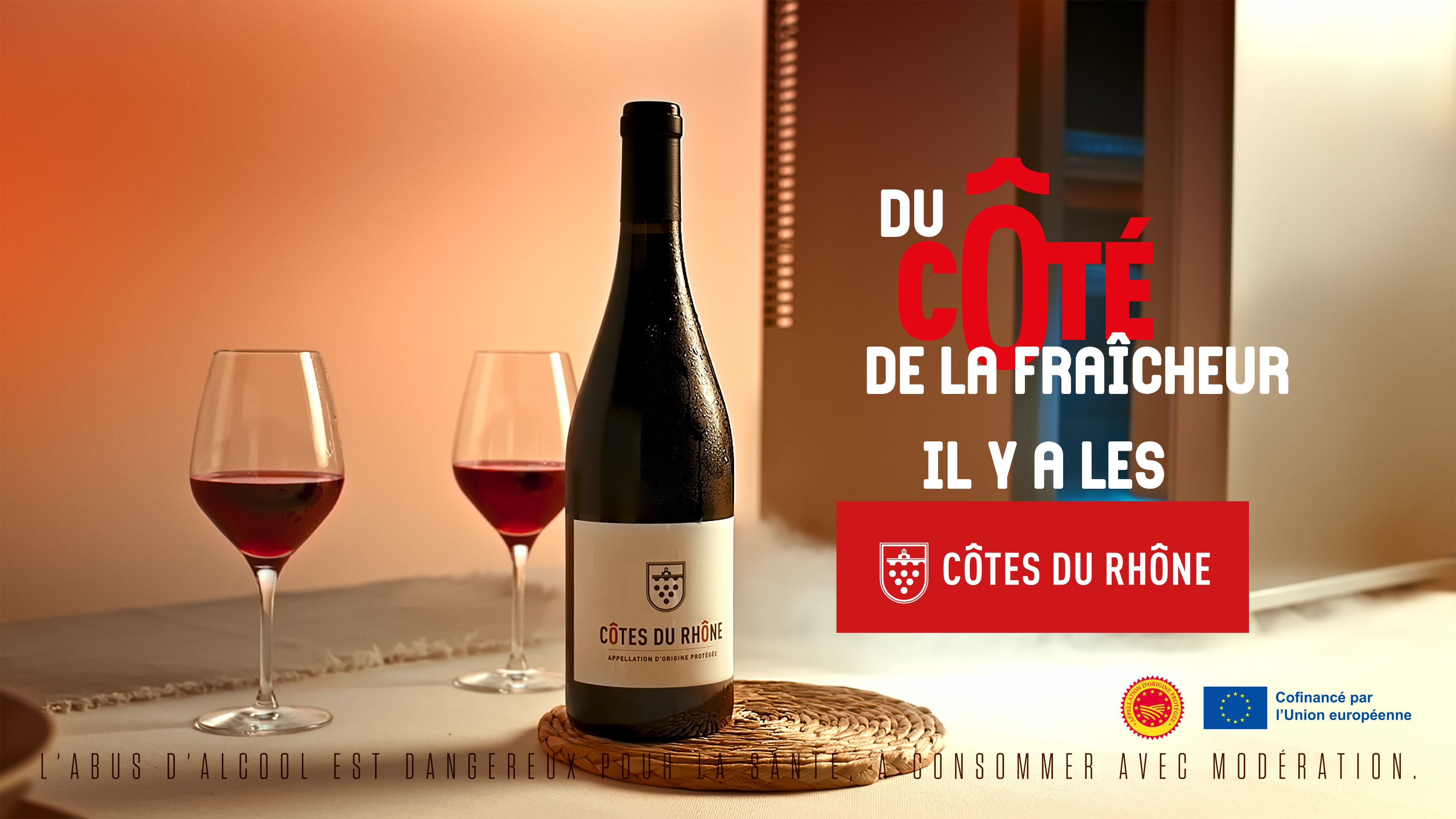- Service
Taste the wines chilled!
Bringing the wine to the right temperature before serving is THE right way to taste the AOC Côtes du Rhône and Côtes du Rhône Villages wines. So let's ignore cultural pressure and rediscover these wines as the winemakers imagined them in the cool of their cellars, with the fruity and delicious character that makes the Côtes du Rhône so successful.

Contents
What service temperature for Côtes du Rhône wines?

Red wines
Serve between 14 and 17°C (57-63°F) to express their aromas and preserve their balance between fullness and freshness.
White wines
Serve between 10 and 13°C (50-55°F) to highlight their freshness without erasing their aromatic expression.
Rosé wines
Serve between 10 and 13°C (50-55°F) to highlight their freshness without erasing their aromatic expression.
Which temperatures should be AVOIDED?
Technically, wines can withstand a fairly wide range of temperatures, and there is no need to have a dedicated thermometer to check the temperature to the nearest half degree. But some temperatures can make or break a tasting, make it a success (see above) or distort the wines' expression.
White and rosé wines
Below 7°C (44°F): The refrigerator's temperature is too low for wines. The cold inhibits the aromatic expression and makes the wines feel bland: tasting is refreshing, but what is tasted is not what the winemaker had in mind when creating the wine.
Above 15°C (59°F): When a bottle is left unsupervised on the table for too long, the wine risks losing its thirst-quenching ability, but also its freshness and balancing liveliness.
Red wines
Below 11°C (51°F): The cold hardens the tannins, increases the astringency, and masks the fruity aromas and flavours that are typical of these wines.
Above 20°C (68°F): The classic temperature of our homes is already too hot for wine! At this temperature, the heating sensation from alcohol weighs down the structure, the fruity flavours fade and the alcohol's warmth takes over, making the wine unbalanced.
So why do we talk about "room temperature"? There are 2 reasons:
- first, in the past, houses were much cooler than today, and room temperatures were often around 17-18°C (around 63°F) ;
- second, before global warming, when the appellations were born, bringing the grapes to ripeness was more challenging than it is today. The wines had lower alcohol levels, so they could withstand higher serving temperatures. But the red wines were also more astringent, and there is nothing like a few extra degrees to round and smooth those tannins out!
The 20-20 rule
A rule that is both easy to remember and easy to put into practice: the "20-20" rule
- Take the whites and rosés out of the refrigerator 20 minutes before serving them: they are fresh without being too cold or icy, they reveal their aromas and the temperature brings out the complexity and richness typical of Côtes du Rhône
- Place the red wines in the refrigerator 20 minutes before serving them: they are just chilled, not too hot, the temperature brings out their fruity side and reveals the gourmet and balanced nature of the Côtes du Rhône."
How to chill my wine?
The refrigerator is often the preferred method, both convenient and accessible. If you want faster results, there's nothing like a bucket filled with water and ice cubes. To further speed up the process, add a handful of coarse salt to the ice water, which lowers the water temperature by a few extra degrees.
And don't worry about the method: the wine doesn't fear thermal shock, and neither its quality nor its profile are impacted by the chosen technique*.
Even a brief stay in the freezer does not alter the aromatic quality of the wines, provided you do not forget them in there!
* Source : “Cooling shock for bottled wine. How dramatic is this before tasting?” Tarasov et al., 2020, published in Beverages"